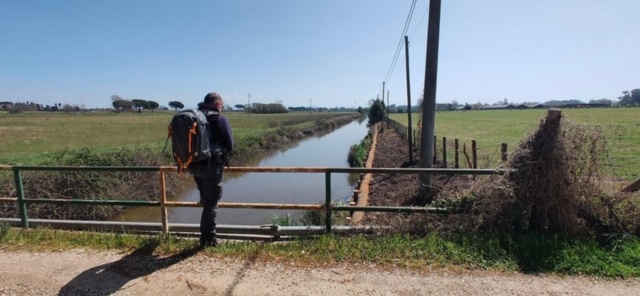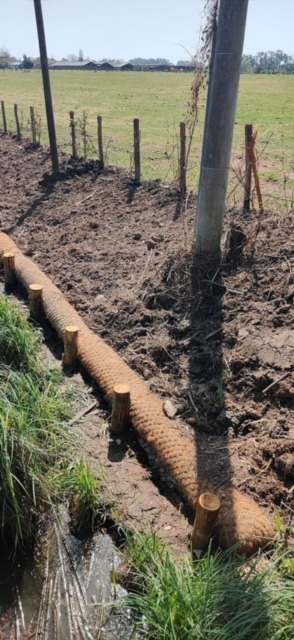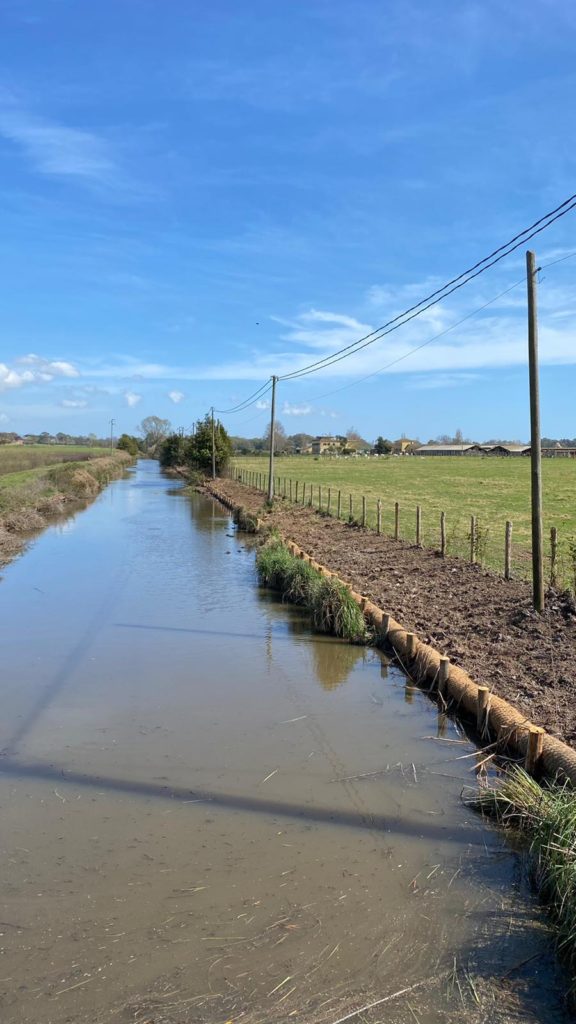When we started the redevelopment interventions inside the Agrilatina farm, the conditions of the allacciante canal were rather compromised due to the presence of nutria (Myocastor coypus).

The monitoring, that preceded the restorastion actions, highlighted, in the first section of the canal, underground tunnels and burrows dug by rodents, with linear development of several meters and by the consequent damage of the banks.
We intervened to restore the riparian vegetation and the overall ecosystem of the canal to increase the biodiversity of the area and strengthen the ecological value of the farm.
Along the left bank we created a herbaceous and arboreal-shrubby plant belt for a stretch of 650 m and a width of 5.
It is a reconstruction of the bank with the insertion of two overlapping bank rollers, as seen in the photo.


The lower roller, made of metal mesh, is be used to contain pebbles, gravel and aggregates; the upper roller is made of coconut fiber retained by a natural or synthetic fiber mesh. With a maximum diameter of 60 cm and a maximum length of 600 cm, the rollers are arranged one after the other in two overlapping rows and tied to a chestnut wood piling.
On the top part cuttings of Frangula alnus (subsp. Alnus), Fraxinus angustifolia (subsp. Oxycarpa) and Ulmus minor were inserted.
On the remaining bank area the planting of hygrophilous species (Typha latifolia and Phragmites australis).
The purpose of this last action is to encourage the establishment of new habitats with more immediate effects than would naturally occur and with rapid benefits for the fish fauna, the avifauna and the self-purifying capacities of the system.
The reed bed areas will be able to break down any nutrients brought by the canal, a very important function also in consideration of the farm’s choice to use biodynamic methods.